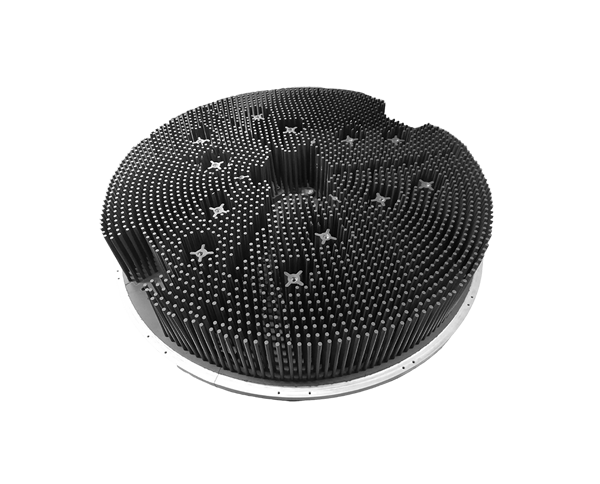2025-02-26 hits:0 source:corten steel fabricators

Powder coating is a dry finishing process that has gained popularity for treating aluminum die - castings due to its numerous advantages.
Process Overview
The powder coating process begins with the preparation of the aluminum die - casting surface. This involves cleaning the surface to remove any dirt, oil, or contaminants. After cleaning, the casting is pre - treated, usually with a chemical conversion coating, to improve the adhesion of the powder coating. The powder coating material, which is a mixture of finely ground resin, pigments, and additives, is then applied to the surface. This can be done through electrostatic spraying, where the powder particles are charged and attracted to the grounded aluminum surface. Once the powder is applied, the casting is heated in an oven. The heat causes the powder particles to melt, flow, and cross - link, forming a smooth, durable coating.
Advantages of Powder Coating
Powder coating offers excellent corrosion resistance. The cured powder coating forms a tough, continuous film that acts as a barrier against moisture, chemicals, and other corrosive elements. This makes it suitable for protecting aluminum die - castings in various environments. In addition, powder coatings have high durability and abrasion resistance. They can withstand mechanical stress and friction, making them ideal for parts that are subject to wear, such as in industrial equipment or outdoor furniture.
Another advantage of powder coating is its environmental friendliness. Since it is a dry process, it does not produce volatile organic compounds (VOCs) like liquid paint coatings. This reduces air pollution and makes powder coating a more sustainable option. Powder coating also allows for a wide range of color and texture options. Different pigments and additives can be incorporated into the powder to achieve various colors, gloss levels, and even special effects, such as metallic or textured finishes.
Powder Coating Quality Assurance
To ensure the quality of powder - coated aluminum die - castings, quality assurance measures are implemented. The thickness of the powder coating is carefully monitored. A coating that is too thin may not provide adequate protection, while a coating that is too thick may cause issues such as cracking or poor adhesion. Thickness can be measured using specialized gauges. The adhesion of the powder coating to the aluminum surface is also tested. This can be done through methods like the pull - off test, where a small area of the coating is pulled to determine its bond strength. The appearance of the coated surface, including color uniformity and smoothness, is also inspected to meet the desired aesthetic standards.
Read recommendations:
This is something that aluminum alloy die-casting factories need to do before opening the mold
